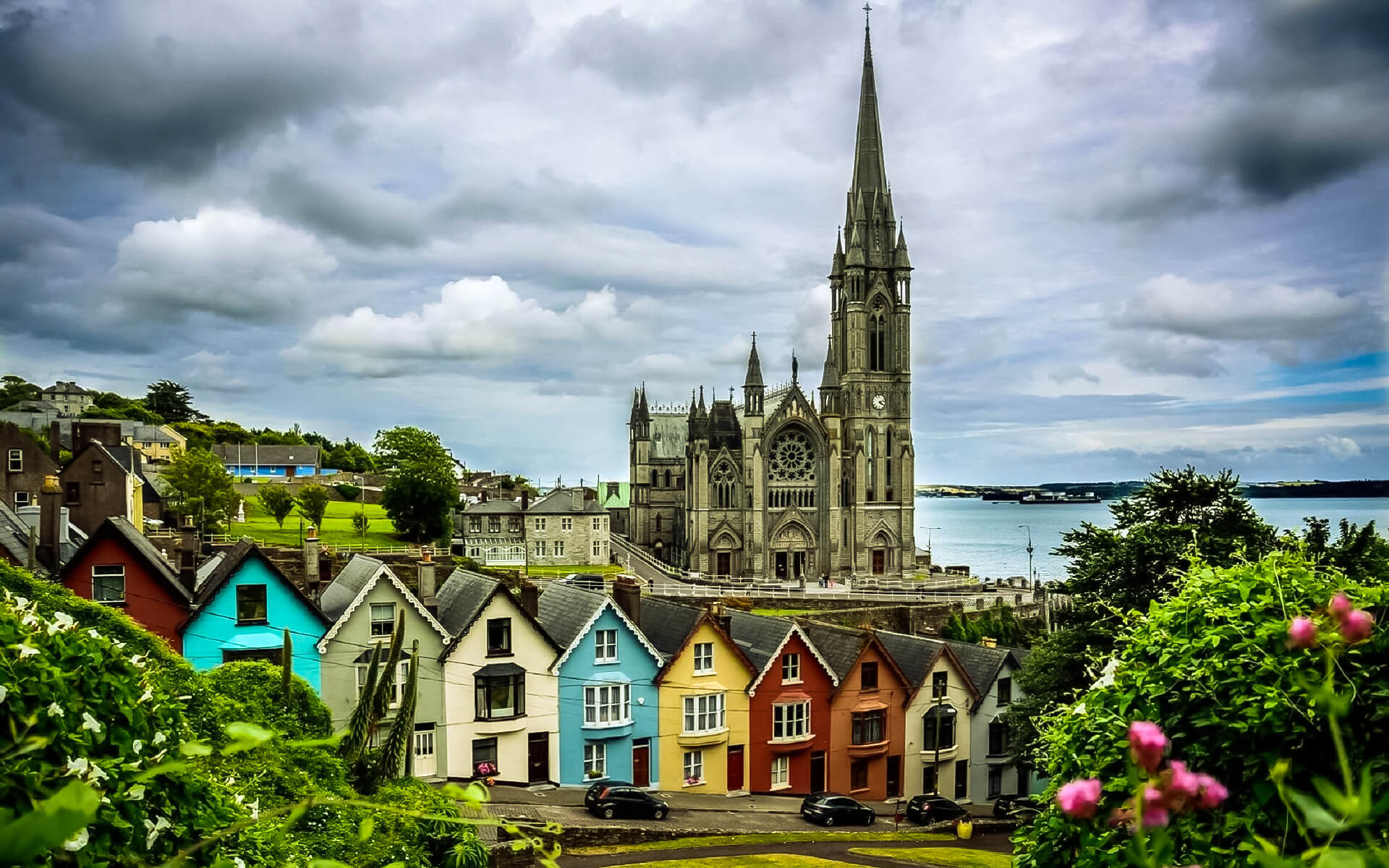Cork has a number of architecturally significant structures dating from the Middle Ages to the Modern Era. The Red Abbey is the sole significant Medieval relic. The city has two cathedrals: St. Mary’s Cathedral and Saint Fin Barre’s Cathedral. St Mary’s Cathedral, often known as the North Cathedral, is the city’s Catholic cathedral and was built in 1808. Its prominent tower was built in the 1860s. St Fin Barre’s Cathedral, the most prominent of the two, serves the Protestant religion. It stands atop the ruins of an ancient cathedral. Under the leadership of architect William Burges, construction started in 1862 and was completed in 1879.
St. Patrick’s Street, the city’s major boulevard, was renovated in the mid-2000s and is noted for the design of the buildings along its pedestrian-friendly path. It is dominated at its northern end by the Father Mathew statue. Its curving form is due to the fact that it was once a conduit of the River Lee that was built over on arches. The General Post Office is located on Oliver Plunkett Street, on the site of the Theatre Royal, which was erected in 1760 and burnt down in 1840. In 1850, the English circus owner Pablo Fanque established an amphitheatre on the site, which was then converted into a theatre and, finally, into the current General Post Office in 1877. The Grand Parade is a tree-lined boulevard lined with offices, boutiques, and financial organizations. The South Mall is the ancient financial district, with some banks whose interiors date from the nineteenth century, such as the Allied Irish Bank, which was originally an exchange.
Many of the city’s buildings are in the Georgian style, however there are a few newer iconic structures, such as the County Hall tower, which was formerly the highest building in Ireland until it was surpassed by another Cork City skyscraper, The Elysian. The prominent sculpture of two men, known locally as ‘Cha and Miah,’ stands outside County Hall. Across the river from County Hall is Ireland’s longest structure; constructed in the Victorian era, Our Lady’s Psychiatric Hospital has been refurbished and transformed into Atkins Hall, named after its architect, William Atkins.
Cork’s most renowned structure is the Shandon Church Tower, which dominates the city’s north side. It is generally considered as the city’s icon. The north and east sides are encased in red sandstone, while the west and south sides are clad in the region’s main stone, white limestone. A weather vane in the shape of an eleven-foot fish rests atop the structure.
Cork City Hall, another remarkable limestone structure, replaced the old one, which was burnt during the War of Independence by the Black and Tans in an action known as the “Burning of Cork.” As a gesture of peace, the UK government paid for the construction of this new edifice in the 1930s.
Elizabeth Fort, the Cork Opera House, Christ Church on South Main Street (now the Triskel Arts Centre and the original site of an early Hiberno-Norse church), St Mary’s Dominican Church on Popes Quay, and Fitzgerald’s Park to the west of the city, which houses the Cork Public Museum, are also noteworthy. The grounds of University College Cork, through which the River Lee runs, the angling lake known as The Lough, the Women’s Gaol at Sundays Well (now a history site), and the English Market are among famous tourist destinations. This covered market goes back to 1610, and the current structure was built in 1786.
There were also two significant commercial breweries in the city until April 2009. The Beamish and Crawford brewery on South Main Street closed in April 2009, and production was moved to the Murphy’s brewery in Lady’s Well. This brewery makes Heineken for the Irish market as well. The Franciscan Well brewery also serves the local market with a range of lagers, ales, and stouts. Food and Wine Magazine named it the “Best Microbrewery in Ireland” in May 2008.
CORK CITY PUB CRAWL
If you’re in Cork City on a Friday night and want to appreciate the city’s pub culture, the Cork City Pub Crawl is a terrific way to do it. It’s a pub crawl/tour/party organized by active local youngsters with the goal of generating a buzz or a bit of craic among Cork City’s visitors and residents. Every Friday, it begins at 20:00 outside the GPO on Oliver Plunkett St. and takes the group to four pubs and a club in Cork. There is a €10 fee, but it saves you money since it includes at least one shot of jaegermeister, one shot of whiskey/tequila, two shots of apple sourz, and admission to the club. The group is a dynamic mix of locals and travellers who are all eager for a good time.


